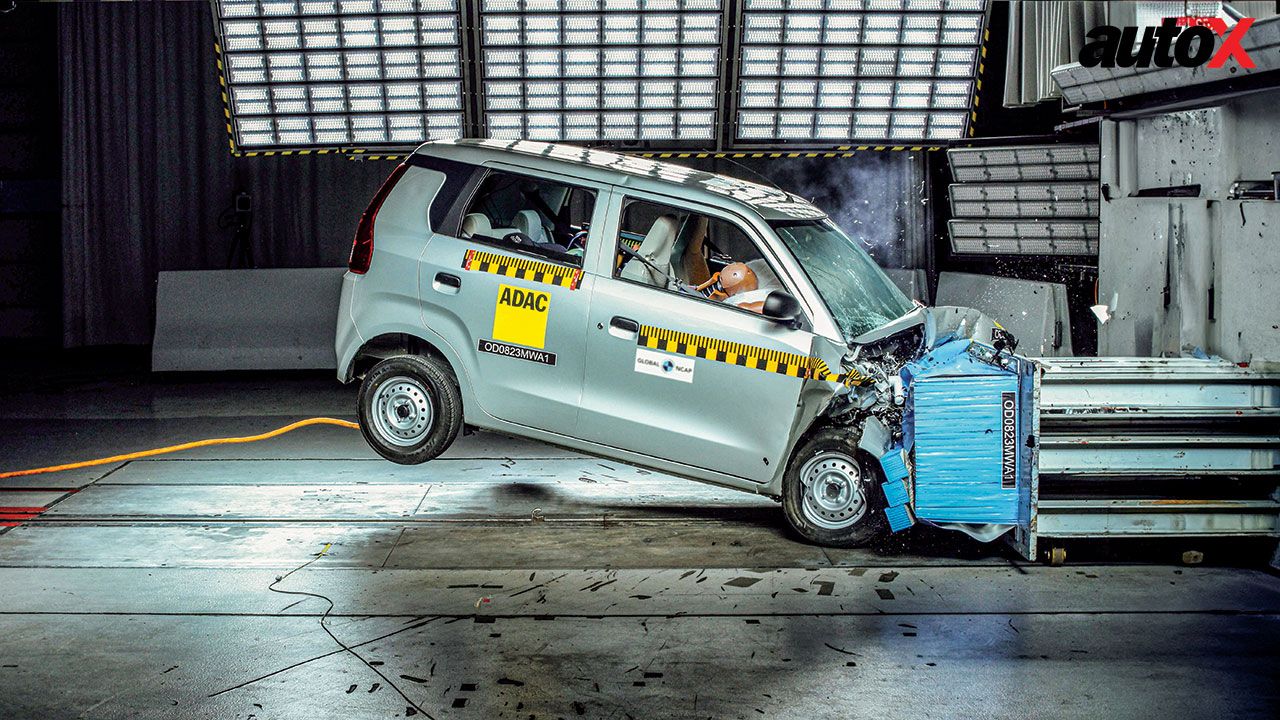
Let me start something serious with a joke I heard during the AIDS era. Yes, dear children, before COVID-19 came along, and even before social media was a thing, AIDS was a global phenomenon, killing people of all strata mercilessly. Anyway... a bank robber brandishing a syringe in his hand entered a prosperous bank and screamed at the teller, “Give me all the money or I will infect someone with this deadly AIDS virus!” But a brave gentleman managed to overpower and subdue the robber. Later, news cameras inevitably were thrust on his face and reporters breathlessly asked him, “You were so brave… Weren’t you afraid of contracting the virus?” To which our hero replied, “No fear, I wear a condom.”
Okay, it was not so funny, but I’ll come back to the context of the joke a little later. Let’s talk about the landmark Bharat New Car Assessment Programme (BNCAP). It is a significant step in road safety intervention in India because it will have the effect of making volume cars manufactured and sold in India safer than before, especially going into the future. BNCAP is voluntary for OEMs, but best-selling models may be asked to be tested compulsorily or the Government may intervene to get some specific models tested. For OEMs, engineering cars that do well in BNCAP tests helps them in two ways primarily – one, it gives them a powerful marketing ‘reason-to-believe’ and use safety as a competitive advantage. Two, it will make models easier to accept for global markets, especially the high-margin developed ones. For customers, like the way the Bureau of Energy Efficiency gives star ratings to a white good that helps you arrive at a decision, BNCAP’s star ratings will help you choose a relatively safer car.
Also Read: Bharat NCAP Safety Rating System Launched in India
All good so far. However, coming back to our hero – to draw a parallel with the prophylactic – even if he is an occupant in a BNCAP-tested car, there’s no guarantee of him emerging unscathed if he is foolhardy on the road. Or is subject to a crash in which he has no control. No matter how highly rated, a car cannot do much against mass and velocity – for example, a truck on the other side of the road losing control and veering towards you. Or even hard-impact events like what happened in the famous Cyrus Mistry crash. It’s just that you may be better off in a BNCAP-tested car, but that’s it.
Hence what we see starting 1 October 2023 should be just the beginning, as tests should increasingly start reflecting real Indian driving conditions. For instance, BNCAP may declare that Model 1 (can’t say X or Y for obvious reasons) has passed the offset collision test well, so you are safer in it when you have a collision with another car of similar size. But I am not sure we encounter as many high-speed car-to-car collisions in India as car-to-truck, car-to-LCV or car-to-bus. So, data collection is vital to inform future BNCAP regulations considering our wildly diverse driving conditions. In other words, I would say that BNCAP is just the starting – indigenizing the tests so that they reflect real-world Indian driving conditions will be a true shot in the arm for road safety.
That’s not all. BNCAP now tests only passenger cars, but when you look at our road fatality and injury statistics, car occupants are already pretty sorted. They don’t account for as many fatalities and injuries as two-wheelers and pedestrians. Of the 154,000 fatalities in 2021 (MoRTH data; 2022 is yet to be uploaded) two-wheelers (45%) and pedestrians (19%) accounted for nearly 65%, while the category called ‘Cars, Taxis, Vans, LMVs’ accounted for 13%. Once again: Cars. And Taxis, Vans, LMVs. The data says it all.
Also Read: Primal Characteristics of a Motorcar - Thrilling, Exciting, Evocative, Electrifying Even
As I have written before, car safety gets all the headlines and hogs all the attention. Now with BNCAP, the decibels are only going to get louder. Well, I surely like to drive in a safe car and road fatalities of any kind are unwanted, but, as an observer, I feel that attention is being diverted away from crucial safety interventions that are non-negotiable (as opposed to ‘voluntary’). Especially infrastructure, road conditions, pedestrian facilities, licensing, law implementation and data reporting/collection – these can help drive down our horrific numbers. And why should BNCAP stop at cars if mortality rates are higher with other kinds of vehicles?
Remember, the objective should be to reduce road fatalities and injuries that occur in our unique driving landscape and not only to rate cars for people who are already privileged to be in a safe cocoon. While BNCAP is symbolic of the maturity of the Indian automotive industry as well as the market, it’s not enough for the mammoth task at hand.























Write your Comment